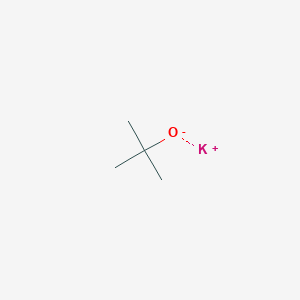First, the chicken house cleaning management
It is advisable to clean the broiler's house as early as possible. Usually within 1 to 2 days after the last batch of chickens are transferred or eliminated: 1 Clean the feed towers, feed storage rooms and feed troughs to avoid feed wastage; 2 Bring chicken manure in the chicken house Clearance and cleaning outside to ensure flushing effect; 3 Clean the dust, cobwebs on the roof, trusses, beams, walls, fans, air inlets, vents, etc. in accordance with the principle of top-down; 4 pairs of drinking water systems (e.g. drinking water pipes, pressure reducing valves), power supply systems (distribution boxes, switches, wires), cages and other equipment and facilities for cleaning; 5 the package of fans, electrical equipment control switches, lock boxes, etc. . Do not remove the facilities and articles outside the house when finishing the house, and arrange, rinse, and disinfect the house. If facilities or items must be removed, strict cleaning and disinfection should be performed before removal to prevent bacteria or viruses from contaminating other areas.
Second, chicken house irrigation management
The house can be rinsed 2 to 3 days after finishing the house. According to the principles of first up, down, first in and out, the flushing effect and working efficiency can be guaranteed, and the cost can also be saved. The order of flushing is: ceiling, cage, feed chute, dung sheet, air inlet, wall, ground , storage room, restroom, operation room, ditch, to prevent the already washed area was re-contamination, corners, ditch and other corners are the focus of the rinse, to avoid the formation of dead ends "; flushing waste water through the rear of the house In addition, it should be promptly cleaned up or fermented to prevent it from polluting the site area and the environment of the house.
Clean the area where the drinking water pipe and cage contact, trunking, feed trough, motor, fan, etc. are not washed or difficult to flush. Workers entering the coop must wear clean work clothes and work shoes; use clean water sources and clean rags during scrubbing; timely clean the rags; sewage from the rags cannot be discharged or splashed in the house, and should be discharged outside the house.
After the flushing is finished, the work effect shall be inspected. Check the storage room, chicken cage, fecal board, dung, equipment control switch, brake box, exhaust outlet and other parts (at least 5 for each part) Above), to ensure that there is no residual feed, chicken manure and chicken feathers and other dirt. For unqualified flushes, immediately re-rinse and recheck until they meet the requirements.
Third, the shed disinfection management
1. Drinking water pipe disinfection. The chicken house is washed on the same day and is soaked with 0.04% Anfu disinfectant for at least 30 minutes. It is best to start the chicken house after fumigation and then rinse with fresh water.
2. Flame disinfection. After the chicken house is washed and dried, it is mainly applied to high temperature parts such as cages and grounds to kill various microorganisms and eggs.
3. Spray disinfection. On the day of the flame disinfection or on the second day, the exterior wall was sprayed with white ash and disinfected. The roofs, floors, cages and equipment inside the house were sprayed and disinfected with quaternary ammonium salts, complex aldehydes and other disinfectants. Under special circumstances, insecticides can be sprayed to destroy the parasites and eggs that remain in the house.
4. Fumigation. On the same day of spraying and disinfection, the required items and tools are moved in before the disinfection. The inlet, outlet, doors, windows, and fans of the house are sealed and sealed with 21 g/m3 bleach and 42 ml/m3 formaldehyde solution. The fumigation time is more than 24 hours, and it can be ventilated and air-cleared and the fumigated residual medicine can be cleaned and rinsed 1 to 3 days before entering the chicken.
5. Microbiological monitoring. In order to confirm the disinfection effect, microbiological monitoring can be conducted. If the requirements cannot be met, the chicken house needs to be sterilized again. The details are shown in the following table.
Potassium Tert-butoxide CAS No.865-47-4
Potassium tert-butoxide Basic Information
CAS: 865-47-4
MF: C4H9KO
MW: 112.21
EINECS: 212-740-3
Mol File: 865-47-4.mol
Potassium Tert-butoxide Structure

Melting point 256-258 °C (dec.)(lit.)
Boiling point 275°C
density 0.910 g/mL at 20 °C
Potassium Tert-butoxide Application
1. Used in pesticides, medicines, printing and dyeing, catalysts, etc.
2. As a strong base, it is widely used in the condensation, rearrangement and ring opening reactions in organic synthesis such as chemical, pharmaceutical and pesticide.
3. It is a moderately strong base commonly used in organic synthesis.
4. The reason why t-BuOK is widely used is that it is inexpensive and readily available, and its basicity changes depending on the selected reaction solvent.
5. For Stobbe condensation, t-BuOK is a better base than EtONa, with higher reaction yield, shorter reaction time, and no side reactions of ketone or aldehyde reduction.
Potassium Tert-Butoxide,Potassium Tert-Butoxide Cas No,Potassium Tert-Butoxide Msds,Potassium Tert Butoxide Formula
ShanDong YingLang Chemical Co.,LTD , https://www.sdylhgtrade.com